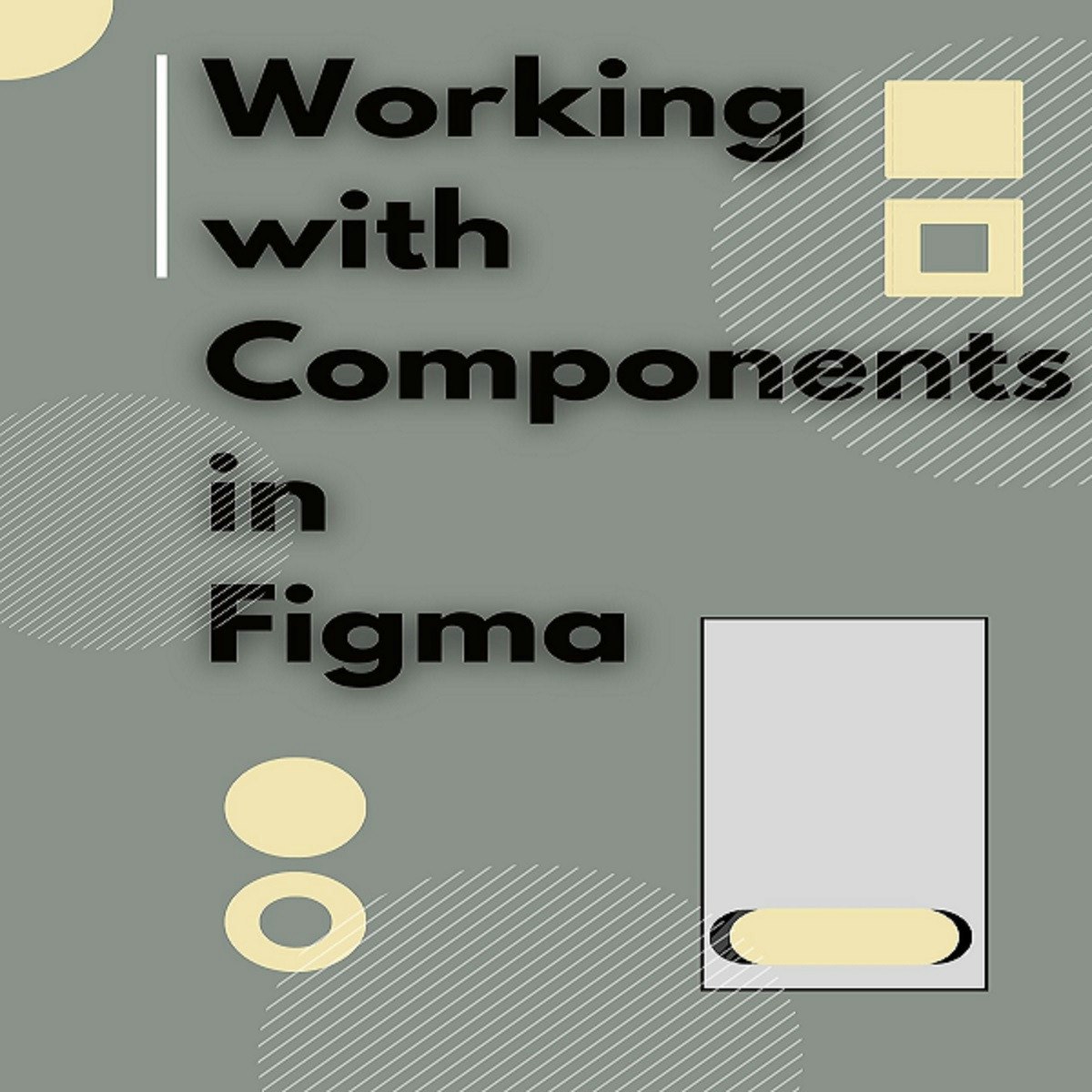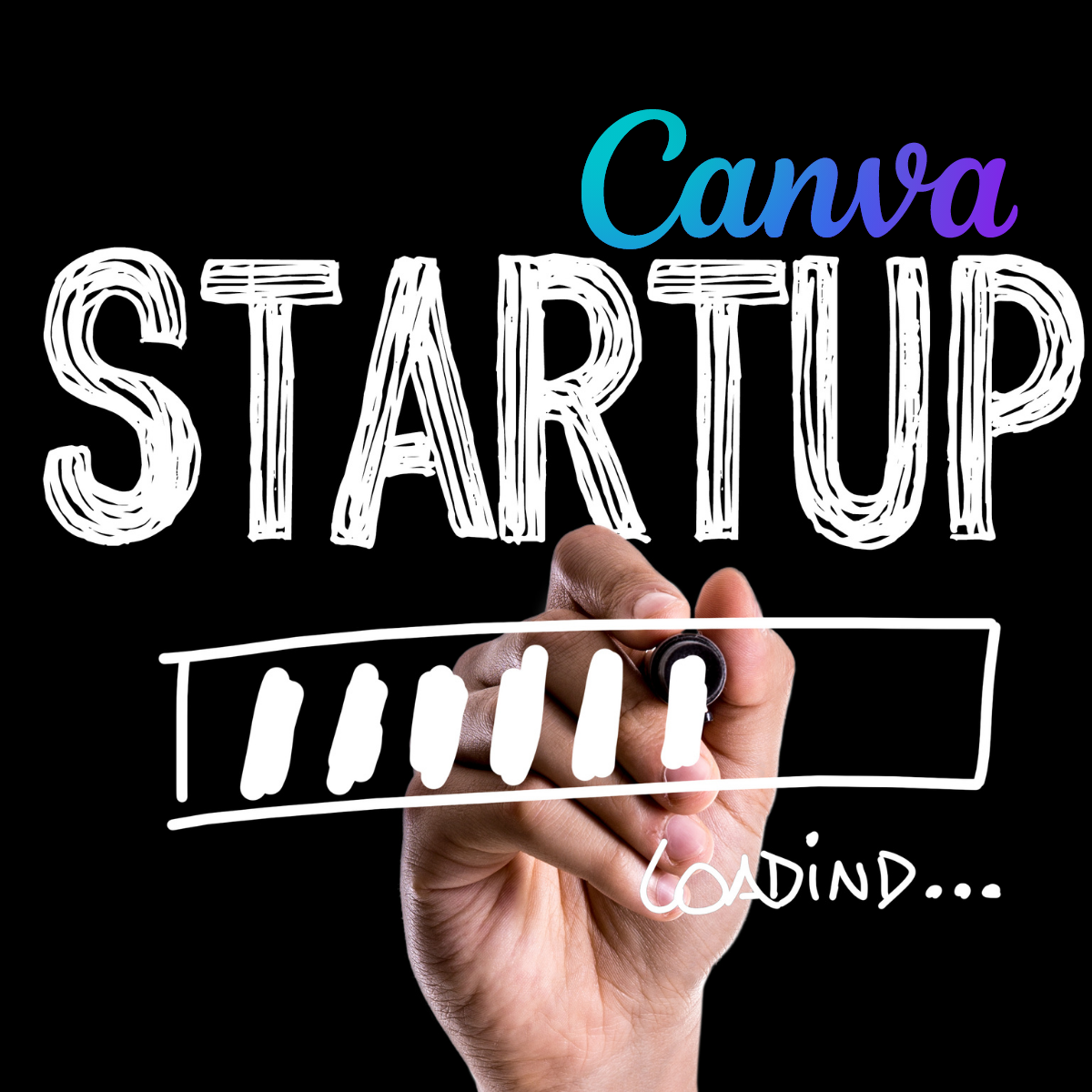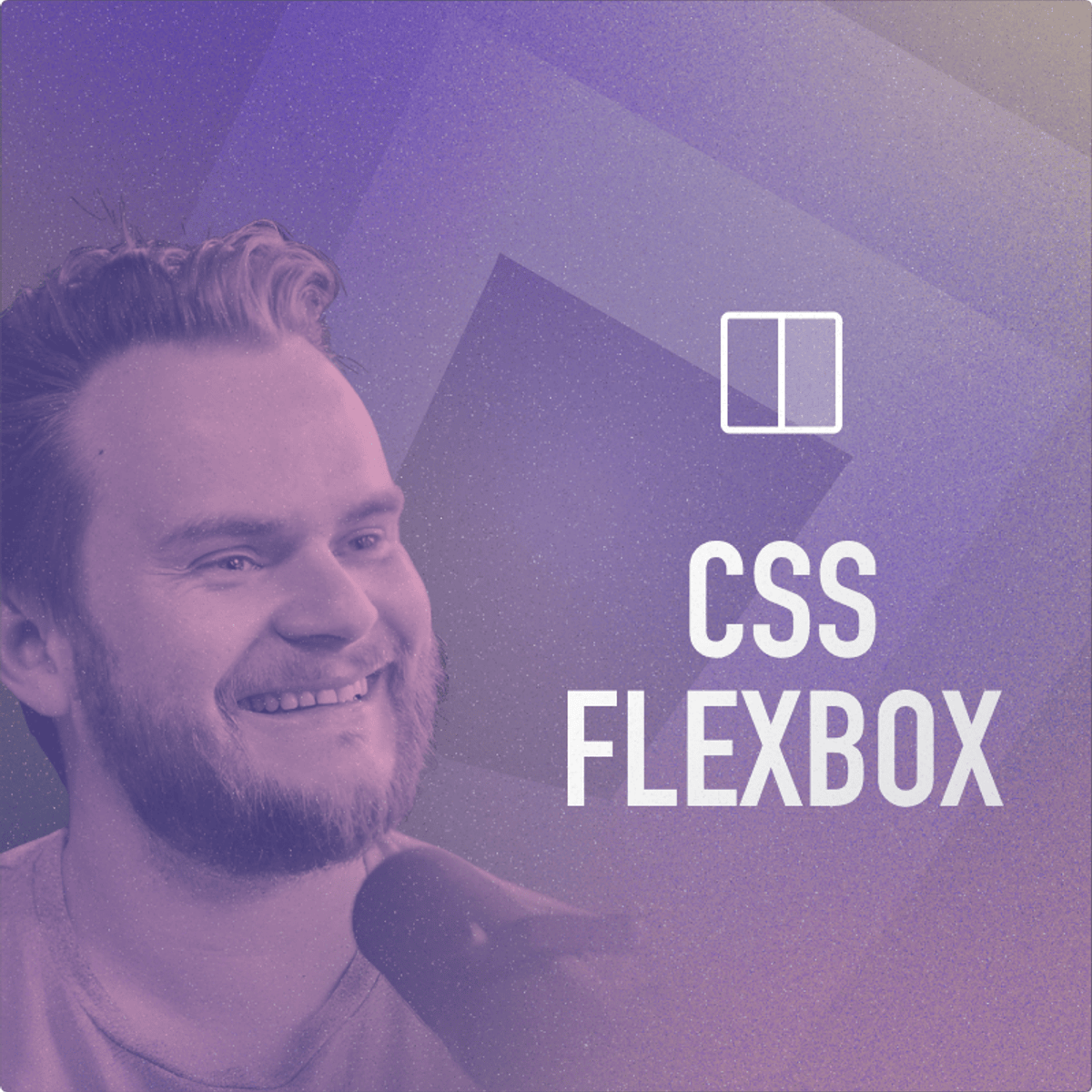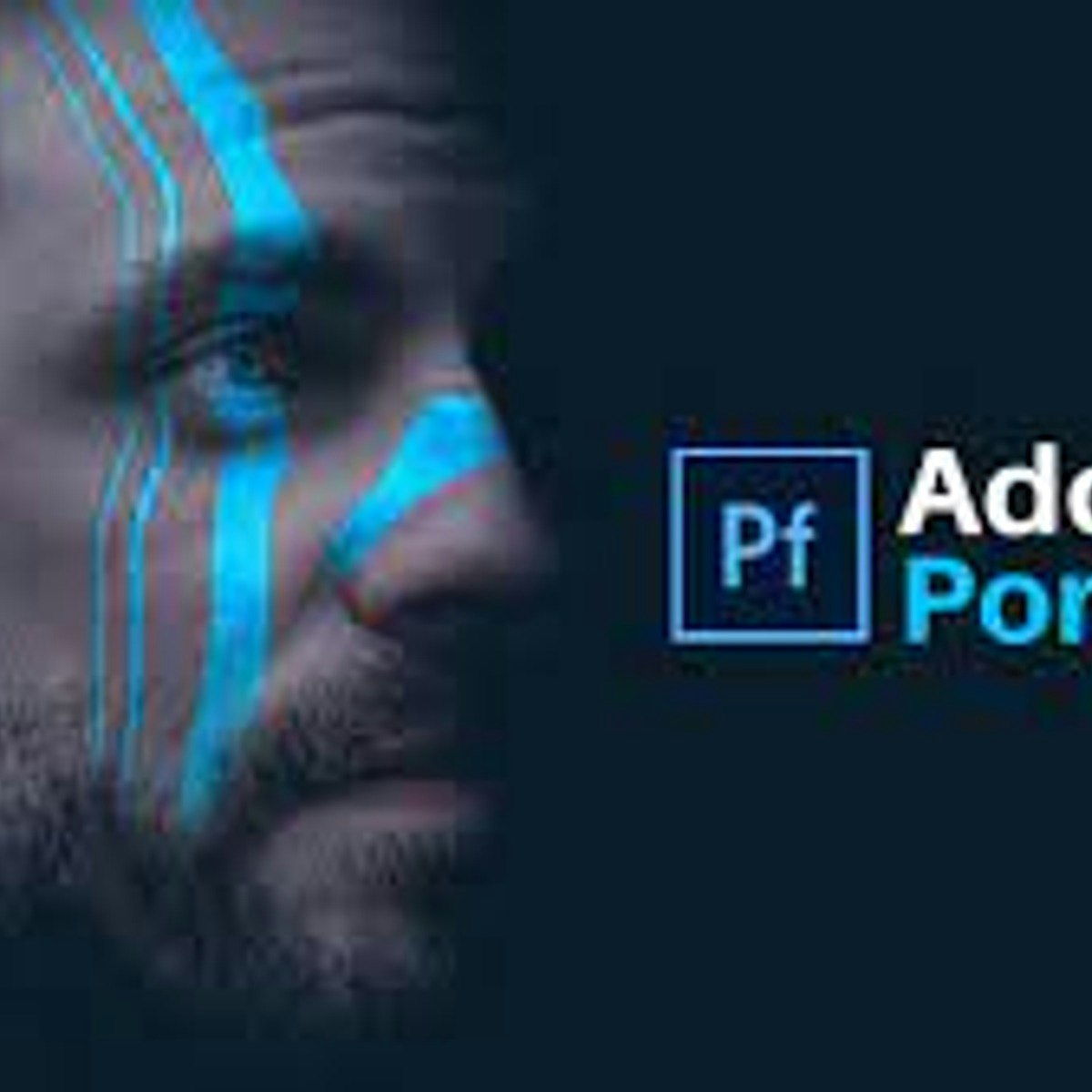Motion Designer
A Comprehensive Guide to Becoming a Motion Designer
Motion design is the art of bringing graphic design elements to life through animation and visual effects. It blends principles of graphic design, animation, filmmaking, and sound design to create compelling visual experiences that communicate ideas, tell stories, or enhance user interactions. Think of the animated logos you see before a movie, the dynamic graphics in commercials, or the subtle animations that make apps feel intuitive – that's motion design at work.
Working as a Motion Designer can be incredibly engaging. You might find excitement in transforming static concepts into dynamic visual narratives for film title sequences or video games. Others are drawn to the technical challenge of mastering complex software to create eye-catching effects for advertisements or interactive web elements. The field constantly evolves, offering continuous learning opportunities and the chance to shape how people experience digital content.
Introduction to Motion Design
Motion design, often called motion graphics, uses animation techniques to add movement and temporal elements to graphic design. It's fundamentally about visual storytelling through time, combining typography, illustration, photography, video, and sound to evoke emotion, convey information, or guide attention. Unlike traditional animation which often focuses on character-driven narratives, motion design frequently deals with abstract shapes, text, and data visualization to enhance communication.
Its interdisciplinary nature means it draws heavily from fields like graphic design for visual principles, animation for movement techniques, and even user experience (UX) design when creating interactive elements. It's a vital component in making digital interfaces feel alive and intuitive, and in making complex information more digestible and engaging.
What is Motion Design and Its Role?
At its core, motion design involves creating moving graphics. This could range from simple text animations to complex 3D scenes with visual effects. The primary role of motion design is communication. It aims to capture audience attention quickly, explain concepts visually, enhance branding, or improve the usability of digital products.
Motion designers use tools and techniques to manipulate graphics over time. This includes setting keyframes to define start and end points of movement, applying effects like blurs or glows, and synchronizing visuals with audio cues. The goal is always to create motion that feels intentional, serves a purpose, and enhances the overall message or experience.
In essence, motion design acts as a bridge between static visuals and the dynamic world of video and interactivity. It provides the visual language for movement in digital media, making content more engaging, informative, and aesthetically pleasing across various platforms.
Where Motion Designers Work
Motion designers find opportunities across a diverse range of industries. The film and television sector heavily relies on motion graphics for title sequences, credits, promotional materials, and on-screen graphics within shows. Broadcast networks employ motion designers to create channel branding, news graphics, and show openers.
Advertising agencies and marketing departments frequently hire motion designers to create animated commercials, social media ads, explainer videos, and website animations. The tech industry needs motion designers for user interface (UI) animations in apps and websites, enhancing user experience and providing visual feedback. Think about the smooth transitions or loading animations on your favorite app.
Other sectors include video game development (for UI elements, cutscenes, and promotional trailers), e-learning (creating engaging educational content), and even specialized fields like data visualization or event production (for large-screen displays). The versatility of the skillset makes motion designers valuable in many creative and technical environments.
Core Responsibilities
The day-to-day responsibilities of a motion designer can vary depending on the role and industry. However, common tasks often start with understanding the project brief, conceptualizing ideas, and creating storyboards or animatics (simplified animated sequences) to plan the visual flow.
Asset creation is another key part. This might involve designing graphics from scratch using illustration or design software, adapting existing brand assets, or working with 3D models. Once assets are ready, the core task is animation – bringing these elements to life using software like Adobe After Effects or Cinema 4D.
Other responsibilities include compositing (combining different visual elements), color correction, rendering the final output, and sometimes basic sound editing or selection. Collaboration with clients, directors, developers, or other designers is also crucial for feedback and revisions throughout the process.
Roles and Responsibilities of a Motion Designer
Delving deeper into the role, a Motion Designer's work is often project-based and deadline-driven. They translate concepts and scripts into moving visuals, requiring both creative interpretation and technical execution. The specific tasks depend heavily on the project scope and the designer's specialization within the field.
A Day in the Life
A typical day might begin with reviewing project requirements or client feedback. Conceptualization often involves sketching ideas, creating mood boards, or developing storyboards to outline the animation's sequence and timing. This planning phase is critical for ensuring the final product meets the objectives.
Much of the day is spent working within animation and design software. This could involve creating or importing graphic assets, setting up animation timelines, meticulously adjusting keyframes to perfect movement, applying visual effects, and rendering test versions for review. Problem-solving is a constant, whether it's figuring out how to achieve a specific look or troubleshooting technical software issues.
Time might also be allocated to meetings with team members or clients, presenting progress, gathering feedback, and making necessary revisions. Staying organized, managing files effectively, and keeping track of deadlines are essential administrative aspects of the role.
Team Collaboration
Motion designers rarely work in isolation. Collaboration is fundamental, especially in larger productions or agency settings. They often work closely with art directors or creative directors who provide overall visual guidance and ensure alignment with the brand or project vision.
In advertising or marketing, collaboration with copywriters and marketers ensures the motion graphics effectively convey the intended message. When working on digital products like apps or websites, motion designers coordinate with UI/UX designers and developers to ensure animations are implemented correctly and enhance usability without hindering performance.
In film or games, they interact with directors, producers, sound designers, and visual effects artists. Effective communication, the ability to interpret feedback constructively, and contributing ideas within a team framework are vital soft skills for success.
Areas of Specialization
While some motion designers are generalists, many choose to specialize. 2D Motion Graphics focuses on animating flat illustrations, text, and shapes, commonly seen in explainer videos, infographics, and UI animations. This often involves strong graphic design and typography skills.
3D Motion Graphics involves creating and animating three-dimensional objects, scenes, and characters using software like Cinema 4D or Blender. This specialization is prevalent in film titles, product visualizations, and high-end commercials, requiring skills in modeling, texturing, lighting, and rendering.
Other specializations include Visual Effects (VFX), which integrates live-action footage with generated imagery; motion design for Augmented Reality (AR) and Virtual Reality (VR), creating immersive animated experiences; and interactive motion design for web and apps.
Formal Education Pathways
While a formal degree isn't always mandatory, particularly if you have a strong portfolio, many motion designers start with a structured educational background. University programs provide foundational knowledge, access to resources, and networking opportunities that can be beneficial for launching a career.
Relevant Degree Programs
Degrees in Graphic Design often provide a strong base in visual principles, typography, color theory, and composition – all essential for motion design. Programs focusing specifically on Animation or Digital Media are also highly relevant, teaching core animation techniques, storytelling, and software proficiency.
Some institutions offer specialized degrees or concentrations in Motion Graphics or Motion Design itself. These programs dive deep into the specific tools and workflows used in the industry, often incorporating elements of film theory, sound design, and interactive media.
Regardless of the specific degree title, look for programs that offer a blend of theoretical knowledge and practical, hands-on experience with industry-standard software and project-based learning. Consider programs that encourage building a professional portfolio throughout the coursework.
Key Coursework and Skills
Essential coursework typically covers the fundamentals of design, including typography (how text looks and is arranged), color theory, and layout principles. Animation principles, such as timing, spacing, squash and stretch, are crucial for creating believable and appealing movement.
Technical skills are developed through courses focused on software like Adobe After Effects (for 2D animation and compositing), Adobe Premiere Pro or DaVinci Resolve (for video editing), and often 3D software like Cinema 4D, Blender, or Maya. Courses in drawing, illustration, and storyboarding build essential visual communication skills.
Beyond technical skills, coursework might include film studies, narrative structure, sound design basics, and user experience principles, especially for those interested in interactive motion design. Understanding how motion fits into broader communication strategies is key.
Graduate Studies and Research
For those seeking advanced roles, deeper specialization, or careers in academia, graduate programs (Master's degrees or MFAs) in Animation, Digital Media, or related fields offer opportunities for in-depth study and research. These programs often allow students to focus on specific areas like experimental animation, interactive installations, or advanced VFX techniques.
Graduate studies emphasize critical thinking, theoretical exploration, and the development of a unique artistic voice. Research opportunities might involve exploring new technologies like AI in animation, interactive storytelling methods, or the psychological impact of motion in user interfaces.
A graduate degree can be advantageous for teaching positions at the university level or for leadership roles requiring a high level of conceptual and theoretical understanding. It provides a space for intensive portfolio development and networking with established professionals and researchers.
Online and Self-Directed Learning
The path to becoming a motion designer isn't limited to traditional university programs. With discipline and the right resources, aspiring designers can effectively build the necessary skills through online courses and self-directed projects. This route offers flexibility and can be more accessible, particularly for career changers or those balancing learning with other commitments.
Success through this path hinges on motivation, structured learning, and actively seeking feedback. OpenCourser provides a vast catalog to help you find courses tailored to specific skills, from beginner tutorials to advanced techniques in industry-standard software.
Building Skills Independently
It is entirely feasible to acquire motion design skills outside of a formal degree. Numerous high-quality online courses cover everything from software basics (like After Effects or Figma) to advanced concepts in animation principles, typography, and visual effects. Many professionals in the field are self-taught or supplement their formal education with continuous online learning.
The key is structuring your learning. Start with foundational design principles and basic software proficiency. Gradually tackle more complex animation techniques and specialized software as your skills develop. Setting personal projects provides practical application for learned concepts and is crucial for skill retention.
Seek out online communities, forums, or mentorship opportunities to get feedback on your work. Critiques from peers and experienced designers are invaluable for identifying areas for improvement and understanding industry standards.
These courses offer a solid starting point for learning essential software and techniques used in motion design, particularly focusing on UI/UX animation and foundational tools.
Balancing Courses and Portfolio
While online courses provide knowledge, a strong portfolio demonstrating practical skills is what ultimately secures jobs. It's vital to balance theoretical learning with hands-on practice. Don't just complete course exercises; apply the techniques to your own creative projects.
Challenge yourself with "passion projects" – animations or designs created purely for your portfolio to showcase your skills and style. Recreate effects you admire, participate in design challenges, or offer pro-bono work for non-profits to gain real-world experience and portfolio pieces.
Your portfolio should showcase a range of skills relevant to the jobs you're targeting. Curate your best work, demonstrating both technical proficiency and creative thinking. Explain the process and your role in each project briefly. Tools like Adobe Portfolio or personal websites are common platforms.
Building a portfolio is an ongoing process. These resources can help you get started with creating and showcasing your work effectively, a critical step in landing motion design roles.
Certifications vs. Practical Experience
Software certifications (e.g., Adobe Certified Professional) can demonstrate proficiency with specific tools, which might be helpful on a resume. However, in the highly visual field of motion design, practical experience demonstrated through a compelling portfolio almost always carries more weight with employers.
Certificates can supplement a portfolio but rarely replace it. Focus on building tangible skills and creating high-quality work samples. Employers want to see what you can *do*, not just what courses you've completed.
Consider certifications as potential tie-breakers or as structured ways to learn specific software deeply. Prioritize project work and portfolio development as your primary means of demonstrating readiness for a motion design role. Real-world projects, even small ones, often teach invaluable lessons about workflow, client communication, and problem-solving that courses alone cannot.
Career Progression in Motion Design
A career in motion design offers various paths for growth, moving from foundational roles to positions of leadership and creative oversight. Advancement depends on developing technical mastery, cultivating a strong creative vision, and honing essential soft skills like communication and project management.
Entry-Level Opportunities
Most motion designers start in junior roles or internships. Titles might include Junior Motion Designer, Motion Graphics Intern, or Animation Assistant. In these positions, the focus is on learning workflows, supporting senior designers, and executing specific tasks within larger projects.
Responsibilities often involve creating simpler animations, preparing assets, making revisions based on feedback, and assisting with rendering or file management. It's a crucial period for absorbing knowledge, understanding industry standards, and refining technical skills under supervision.
Building a strong foundational portfolio, demonstrating eagerness to learn, and being a reliable team player are key to succeeding in entry-level positions and setting the stage for future growth.
Mid-Career Advancement
With several years of experience, motion designers typically advance to mid-level roles like Motion Designer or Senior Motion Designer. At this stage, they take on more complex projects, exercise greater creative autonomy, and may begin mentoring junior staff.
Responsibilities expand to include concept development, storyboarding, leading smaller projects, and direct client interaction. Technical skills are expected to be strong, coupled with a good understanding of design principles and storytelling. Specialization in areas like 3D, VFX, or interactive design often occurs at this stage.
Transitioning towards leadership might involve roles like Lead Motion Designer or Art Director. These positions require not only excellent design skills but also the ability to guide a team's creative vision, manage projects, and communicate effectively with stakeholders.
Leadership and Senior Roles
At the highest levels, motion designers can become Creative Directors, Animation Directors, Studio Heads, or VFX Supervisors. These roles focus on strategic vision, team leadership, client relationships, and overall creative quality for multiple projects or entire departments.
Leadership positions demand a deep understanding of the industry, strong business acumen, excellent communication and presentation skills, and the ability to inspire and manage creative teams. The focus shifts from hands-on execution to guiding the creative direction and ensuring projects meet strategic goals.
Some senior designers also pursue freelance careers, building their own brand and client base, or establish their own studios. Others might transition into teaching or consulting roles, sharing their expertise with the next generation or advising companies on visual communication strategies.
Motion Designer in Industry Applications
Motion design is not just an artistic pursuit; it's a valuable tool used across numerous industries to achieve specific business and communication goals. Understanding where and how motion design creates impact provides context for its market relevance and potential applications.
Demand Across Media Platforms
The rise of streaming services (like Netflix, Hulu, Disney+) has created significant demand for motion designers to produce engaging title sequences, promotional content, and in-show graphics. This contrasts with traditional media, like broadcast television, which also relies heavily on motion graphics for branding, news segments, and commercials, but faces different market dynamics.
Digital advertising is another major driver. Animated banner ads, social media video ads, and explainer videos leverage motion design to capture attention and communicate messages quickly in crowded online spaces. The need for dynamic content on websites and mobile apps also fuels demand.
Market trends suggest continued growth in areas requiring digital content creation. According to the U.S. Bureau of Labor Statistics, employment for multimedia artists and animators is projected to grow, driven partly by increased demand for animation and visual effects in video games, movies, television, and mobile devices.
Impact on Advertising and Marketing
In advertising, motion design plays a crucial role in grabbing viewer attention and making brand messages memorable. Animated logos, dynamic typography, and visually engaging product demonstrations can significantly increase ad recall and effectiveness compared to static visuals.
Motion graphics are particularly effective for explainer videos, breaking down complex products or services into easily digestible visual narratives. This enhances understanding and can improve conversion rates for businesses. On social media, motion content generally achieves higher engagement rates than static images.
Measuring the direct Return on Investment (ROI) of motion design can be challenging, but its contribution is evident in metrics like increased click-through rates, higher video completion rates, improved brand perception, and better user engagement on digital platforms.
This course focuses on creating compelling visual presentations, a skill directly applicable to marketing and advertising contexts.
Emerging Sectors and Applications
Beyond traditional media and advertising, motion design is finding applications in new and growing fields. Medical visualization uses motion graphics and 3D animation to illustrate complex biological processes or surgical procedures for training and patient education.
The e-learning industry utilizes motion design to create more engaging and effective educational content, moving beyond static text and images. Data visualization increasingly employs animation to make complex datasets more understandable and compelling for presentations and reports.
Other emerging areas include motion graphics for AR/VR experiences, creating interactive elements for immersive environments, and generative motion design, where algorithms assist in creating complex animated patterns or sequences. These new frontiers offer exciting opportunities for skilled motion designers.
Technical Skills and Tools
Mastery of specific software and technical skills is fundamental to working as a motion designer. While creativity is paramount, the ability to translate ideas into finished products relies on technical proficiency with industry-standard tools and techniques.
Essential Software Proficiency
Adobe After Effects is widely considered the industry standard for 2D motion graphics, animation, and compositing. Proficiency in After Effects is often a core requirement for motion design roles. Familiarity with related Adobe Creative Cloud apps like Illustrator, Photoshop, and Premiere Pro is also highly beneficial.
For 3D motion graphics, popular choices include Cinema 4D (known for its integration with After Effects and user-friendliness for graphic designers), Blender (a powerful open-source option), Maya, and 3ds Max. The choice often depends on industry focus (e.g., film vs. broadcast vs. games).
Figma and Sketch are increasingly important, especially for designers working on UI/UX animations, as they allow for seamless design and prototyping workflows. Understanding these tools helps bridge the gap between static design and interactive motion.
These courses provide hands-on experience with Figma, a key tool for UI/UX focused motion design, covering essentials and more advanced techniques.
Core Technical Skills
Beyond software knowledge, specific techniques are essential. Keyframing is the foundation of most animation, involving setting parameters (position, scale, rotation, etc.) at specific points in time to create movement.
Understanding animation principles (timing, easing, anticipation, etc.) is crucial for creating motion that looks natural and appealing. Skills in compositing (layering and blending different visual elements), masking, and tracking are important for integrating graphics with video or creating complex scenes.
For 3D work, skills include modeling (creating 3D shapes), texturing (applying surface details), lighting (setting up virtual lights), and rendering (generating the final image). Techniques like rigging (creating skeletons for character animation) and particle systems (for effects like smoke or fire) are relevant for specialized roles.
Complementary Skills
Strong motion design often incorporates knowledge from related fields. A solid understanding of graphic design principles, including typography, layout, and especially color theory, is fundamental for creating visually effective work.
Basic sound design skills – selecting appropriate music, adding sound effects, and synchronizing audio with visuals – can significantly enhance the impact of motion graphics. While dedicated sound designers often handle complex audio, basic proficiency is valuable.
Skills in storytelling, storyboarding, and concept development help translate ideas into compelling narratives. Familiarity with video editing principles and software complements animation skills. For web or UI/UX roles, understanding basic coding concepts (like CSS animations) or interaction design principles can be advantageous.
These courses cover broader design principles and tools that complement core motion design skills, enhancing visual communication abilities.
Industry Trends Affecting Motion Designers
The field of motion design is dynamic, influenced by technological advancements, changing media consumption habits, and evolving creative tools. Staying aware of these trends is important for career longevity and adapting skills to future demands.
Artificial Intelligence in Animation
Artificial intelligence (AI) is increasingly integrated into creative software. AI-assisted tools can automate repetitive tasks like rotoscoping (tracing objects frame-by-frame), generate animation variations, or even create basic motion sequences from prompts. This raises discussions about AI's role as a tool versus a replacement for human creativity.
While AI can boost efficiency and open new creative possibilities, understanding its capabilities and limitations is key. Ethical debates surrounding AI-generated art, copyright, and potential job displacement are ongoing within the creative community. Designers may need to adapt by focusing on higher-level creative direction, unique styles, and tasks requiring complex problem-solving that AI currently cannot replicate.
Forward-thinking designers are exploring how to leverage AI as a collaborative tool to enhance their workflow, rather than viewing it solely as a threat. Staying updated on AI developments in creative tech is becoming increasingly important. A report by McKinsey & Company discusses the broader economic potential and impact of generative AI across various sectors, including creative industries.
Real-Time Rendering Engines
Traditionally, rendering complex 3D motion graphics could take hours or even days. The rise of powerful real-time rendering engines like Unreal Engine and Unity is changing this landscape. Originally developed for gaming, these engines allow designers to see near-instant visual feedback as they work and render final animations much faster.
This shift enables more iterative workflows, virtual production techniques (where digital backgrounds are rendered in real-time during filming), and the creation of highly complex interactive experiences. Motion designers proficient in these real-time engines are increasingly in demand, particularly in industries like gaming, virtual reality, and architectural visualization.
Learning the workflows and principles of real-time rendering represents a significant potential growth area for motion designers looking to stay ahead of the technological curve.
Globalization and Freelance Markets
The motion design field has become increasingly globalized, facilitated by online collaboration tools and freelance platforms. This allows companies to access talent worldwide and enables designers to work remotely for international clients.
While this opens up opportunities, it also increases competition. Designers may compete with others globally, potentially impacting rates and project availability depending on location and specialization. Building a strong personal brand, networking effectively online, and specializing in high-demand niches can help freelancers thrive in this global market.
Understanding how to manage international clients, navigate different time zones, and handle cross-border payments are becoming relevant skills for freelance motion designers operating in this interconnected environment.
Challenges and Considerations
Pursuing a career in motion design offers many creative rewards, but it's also important to be aware of potential challenges. Understanding these hurdles can help you prepare and navigate the realities of the profession, ensuring a sustainable and fulfilling career path.
Entering any creative field requires resilience and dedication. If you encounter challenges, remember that persistence and continuous learning are key. Resources like the OpenCourser Learner's Guide can offer strategies for effective self-study and skill development.
Job Stability and Project-Based Work
Much of the motion design industry operates on a project-by-project basis, particularly for freelancers or those working in smaller studios or agencies. This can lead to periods of intense work followed by lulls, potentially affecting income stability. Finding consistent work often requires active networking and self-promotion.
Even in full-time roles, company restructures, project cancellations, or shifts in market demand can impact job security. Developing strong financial planning habits and continuously building your professional network can help mitigate the uncertainties associated with project-based industries.
Cultivating relationships with multiple clients or diversifying income streams (e.g., selling stock assets, teaching workshops) can provide a buffer during slower periods for freelance designers.
Physical Strain and Burnout
Motion design work typically involves long hours spent sitting at a computer, often performing repetitive mouse and keyboard actions. This can increase the risk of physical strain, such as repetitive stress injuries (RSI) affecting the wrists, neck, and back, as well as eye strain.
Maintaining proper ergonomics (desk setup, chair posture), taking regular breaks to stretch and move, and being mindful of posture are crucial for long-term physical health. The pressure of deadlines and demanding creative expectations can also contribute to stress and potential burnout if not managed effectively.
Setting realistic boundaries, practicing time management, prioritizing sleep and exercise, and seeking support when needed are important strategies for maintaining well-being and preventing burnout in a demanding creative career.
Competition and Skill Evolution
The field of motion design is competitive, with many talented individuals vying for opportunities. Standing out requires not only strong technical skills but also a unique creative voice, a professional portfolio, and good communication abilities.
Technology and software evolve rapidly. Designers must commit to continuous learning to stay proficient with the latest tools, techniques, and industry trends. Skills that are in high demand today might become less relevant tomorrow, necessitating adaptability and a proactive approach to skill development.
The emergence of automated design tools and AI also presents a form of competition, reinforcing the need for designers to focus on creativity, strategic thinking, and complex problem-solving – areas where human input remains essential.
Frequently Asked Questions
Here are answers to some common questions aspiring motion designers often have.
Can motion design be a remote career?
Yes, motion design is well-suited for remote work. Many tasks can be performed independently with a powerful computer and the necessary software. Collaboration often happens effectively through video calls, project management tools, and file-sharing services.
Freelance motion designers frequently work remotely, serving clients globally. Many companies, studios, and agencies also offer remote or hybrid positions, recognizing the flexibility it provides. However, some roles, especially those involving close collaboration with physical production or specific hardware, might require on-site presence.
Success in remote work requires strong self-discipline, excellent communication skills, and a reliable home office setup with a stable internet connection.
Is coding knowledge necessary?
Generally, coding is not a strict requirement for most motion design roles, especially in 2D or 3D animation for video or film. The primary focus is on visual design and animation software.
However, basic scripting knowledge (like Adobe After Effects Expressions) can significantly enhance efficiency and creative possibilities by automating tasks or creating complex procedural animations. For designers specializing in web animation or interactive UI/UX, understanding HTML, CSS (especially CSS animations/transitions), and sometimes JavaScript can be highly advantageous or even required.
While not always essential, familiarity with coding concepts can broaden your skillset and make you more versatile, particularly for roles at the intersection of design and development.
How does motion design differ from VFX?
Motion Design and Visual Effects (VFX) are related but distinct fields. Motion design primarily focuses on animating graphic elements, text, and abstract shapes to communicate ideas or enhance aesthetics. It often originates from a graphic design foundation.
VFX, on the other hand, typically involves integrating computer-generated imagery (CGI) with live-action footage to create realistic or fantastical scenes that would be impossible or impractical to film directly. VFX work often includes tasks like compositing, tracking, simulation (fire, water, smoke), and digital character creation.
While there's overlap (e.g., compositing skills are used in both), motion design is generally more about designing movement for graphics, whereas VFX is often about seamlessly blending generated elements into realistic filmed environments.
What are typical salary ranges?
Salaries for motion designers vary significantly based on experience level, location (cost of living), industry (e.g., tech vs. non-profit), specialization (2D vs. 3D vs. VFX), and employment type (freelance vs. full-time).
Entry-level positions might start lower, while senior designers, art directors, or specialists in high-demand areas (like real-time engines or complex 3D) can command much higher salaries. Freelance rates also vary widely, often charged per project, per day, or per hour.
For specific salary estimates, consulting resources like the U.S. Bureau of Labor Statistics (for multimedia artists and animators), Glassdoor, LinkedIn Salary, or industry-specific surveys can provide more geographically relevant data.
What portfolio requirements exist for entry-level positions?
For entry-level roles, employers look for a portfolio that demonstrates foundational skills, creative potential, and proficiency with core software (usually After Effects). Quality over quantity is key – showcase 3-5 of your strongest, most polished pieces.
Include work that shows a grasp of animation principles (good timing, easing), basic graphic design skills (composition, typography), and technical competence. Personal projects or impressive student work are perfectly acceptable. If possible, include pieces relevant to the specific type of work the company does (e.g., UI animations for a tech company, title sequences for a film studio).
Ensure your portfolio is easy to navigate and view online. Briefly explain your role and the tools used for each project. A clean presentation and error-free work (no typos, smooth animation) are crucial.
This course focuses specifically on creating a UX portfolio, a critical asset for designers targeting user experience roles.
How might AI impact job prospects?
AI is likely to change aspects of the motion design workflow, potentially automating some routine tasks and offering new creative tools. It may streamline processes like generating simple animations, creating variations, or assisting with tasks like rotoscoping.
However, AI is unlikely to completely replace motion designers in the near future. Creativity, critical thinking, nuanced storytelling, client communication, and understanding complex briefs remain uniquely human skills. The role may evolve, requiring designers to learn how to effectively utilize AI tools and focus more on high-level creative direction and complex execution.
Job prospects will likely favor designers who are adaptable, embrace continuous learning, and can leverage AI as a tool to enhance their creativity and efficiency, rather than those who resist technological shifts.
Embarking on a career as a Motion Designer requires a blend of artistic talent, technical skill, and dedication to continuous learning. It's a field that offers immense creative satisfaction by bringing visuals to life across diverse media. Whether you pursue formal education or forge your path through online learning and self-directed projects using resources like those found when you browse design courses on OpenCourser, building a strong portfolio and staying adaptable are key to success in this dynamic and rewarding profession.
















